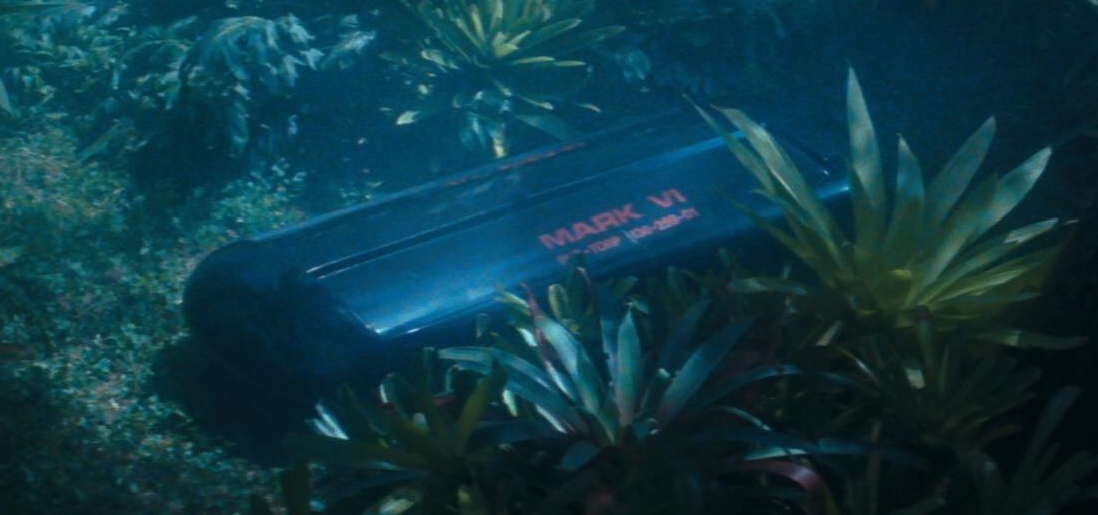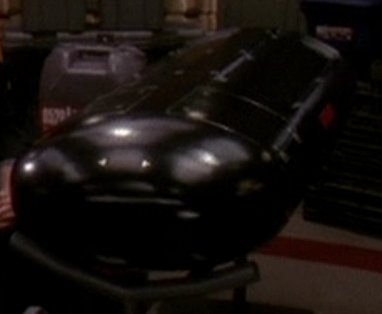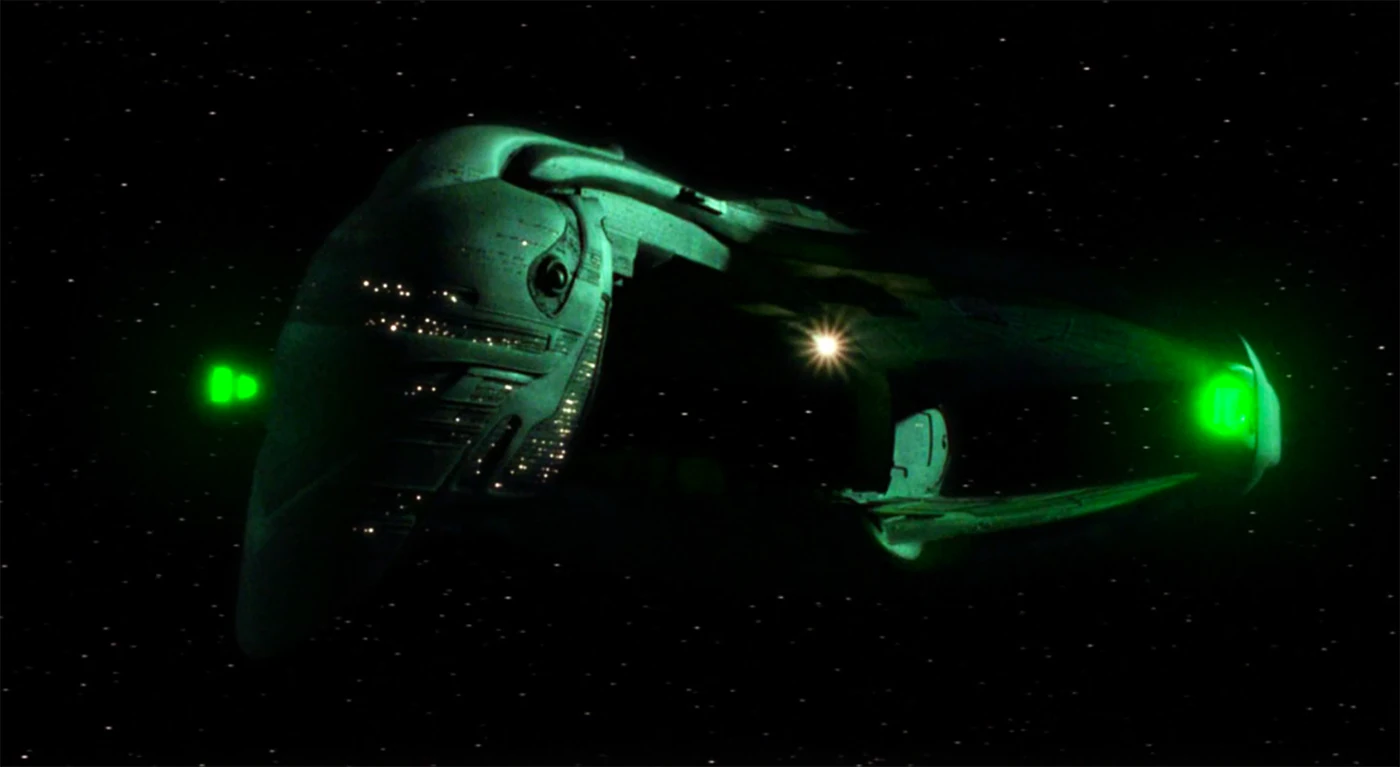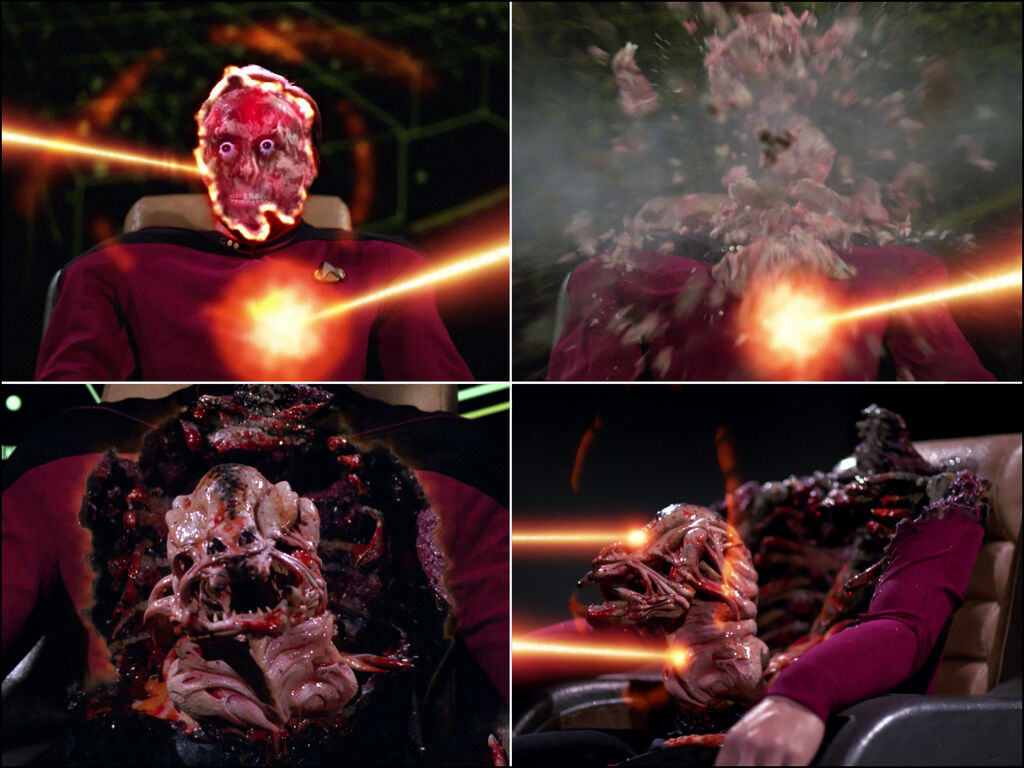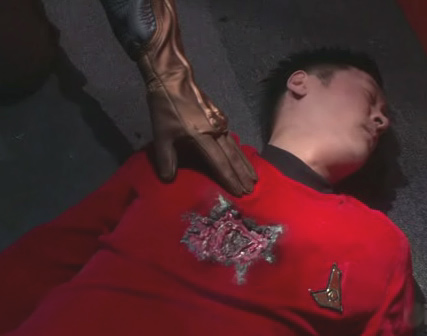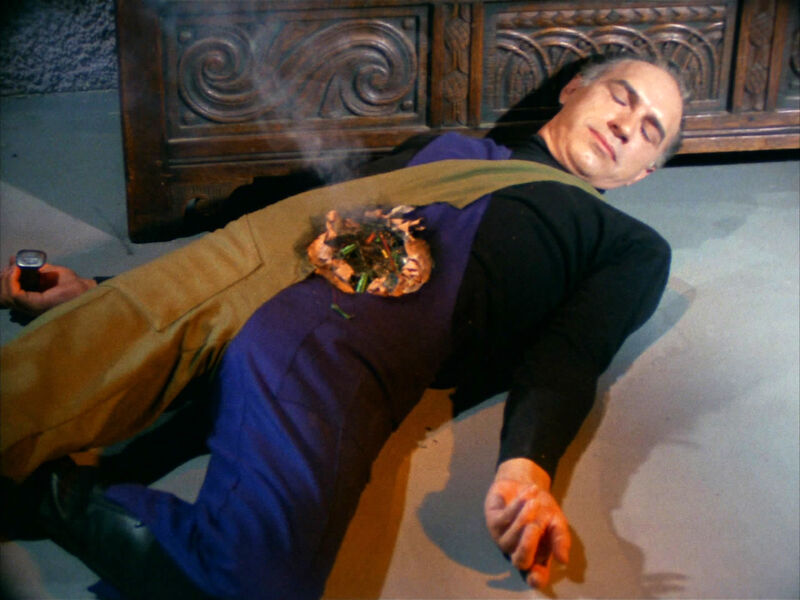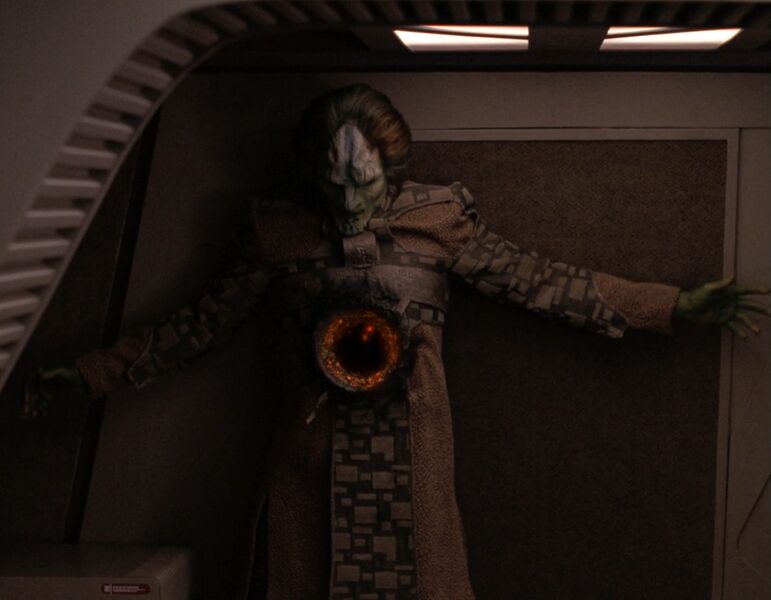- 384
- 119
The current AP for the Original Enterprise states the following:
"Continent level+ standard phaser output against solid matter (demonstrates an effect of 4.3 petatons for a phaser burst - see weaponry explanation below for why this only applies to solid matter), City level standard phaser output against deflector shields (scaling from Photon Torpedoes), At least City level with Photon Torpedoes"
"Star Trek phasers work through the generation of a subatomic particle known as nadions, which according to the guidebook and script can cause "liberation of atomic nuclei, disrupting nuclear forces". Basically, it causes a reaction in solid matter that causes a semi-perpetuating subatomic destruction effect, which lasts until the particles are expended. In other words, it is the particle to energy ratio that causes the damage not the actual energy (can be seen in this source: https://www.phasers.net/2360/settings.htm - site used for current accepted hand phaser calc). This reaction is clearly seen with clean "disappearing" of objects hit by phasers, after being hit there is no more matter to react with. Phasers don't do as much damage as photon torpedoes against shields, because they focus less on raw energy output and more on damage caused by the particles which are blocked from reacting by the shields."
I see these statements as highly inaccurate: the site being referenced states that it uses the "Next Generation Technical Manual" - a well recognized recognized non-canon source that directly contradicts the Star Trek TV series in a myriad of ways. To start: in The Doomsday Machine, the Enterprise took a direct hit from the Planet Killer's main weapon with it's shields down (thus, any "exotic particle effect" would have been at play against the bare hull), and it didn't even breach the armor. If the AP were true, the ship should have been instantly atomized. While some might see this as plot armor, the U.S.S. Constellation endured a battle with the Planet Killer in the same episode, and it was in this condition afterwards:
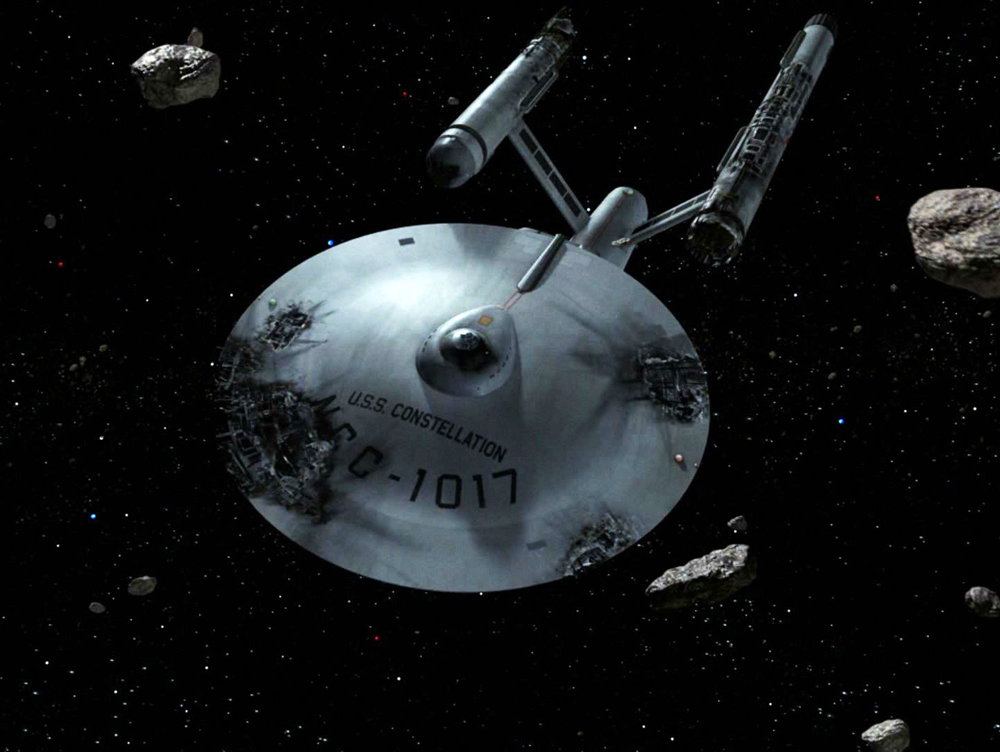
^ The Constellatio after battle with the Planet Killer.
The hull is largely intact and bearing multiple breaches, indicating that multiple shots to the unshielded matter of the ship didn't disintegrate it. The idea that it's specifically phasers that work through "liberation of atomic nuclei" is shown to be false in The Ultimate Computer, where we see fully powered phasers fired against unshielded Federation Starships of the same class as the Enterprise, and they were not immediately destroyed by any such effect. Rather, it took several direct hits to breach the hull, and even the Excalibur - the entire crew of which was killed - was merely wrecked, and not totally destroyed on an atomic level.
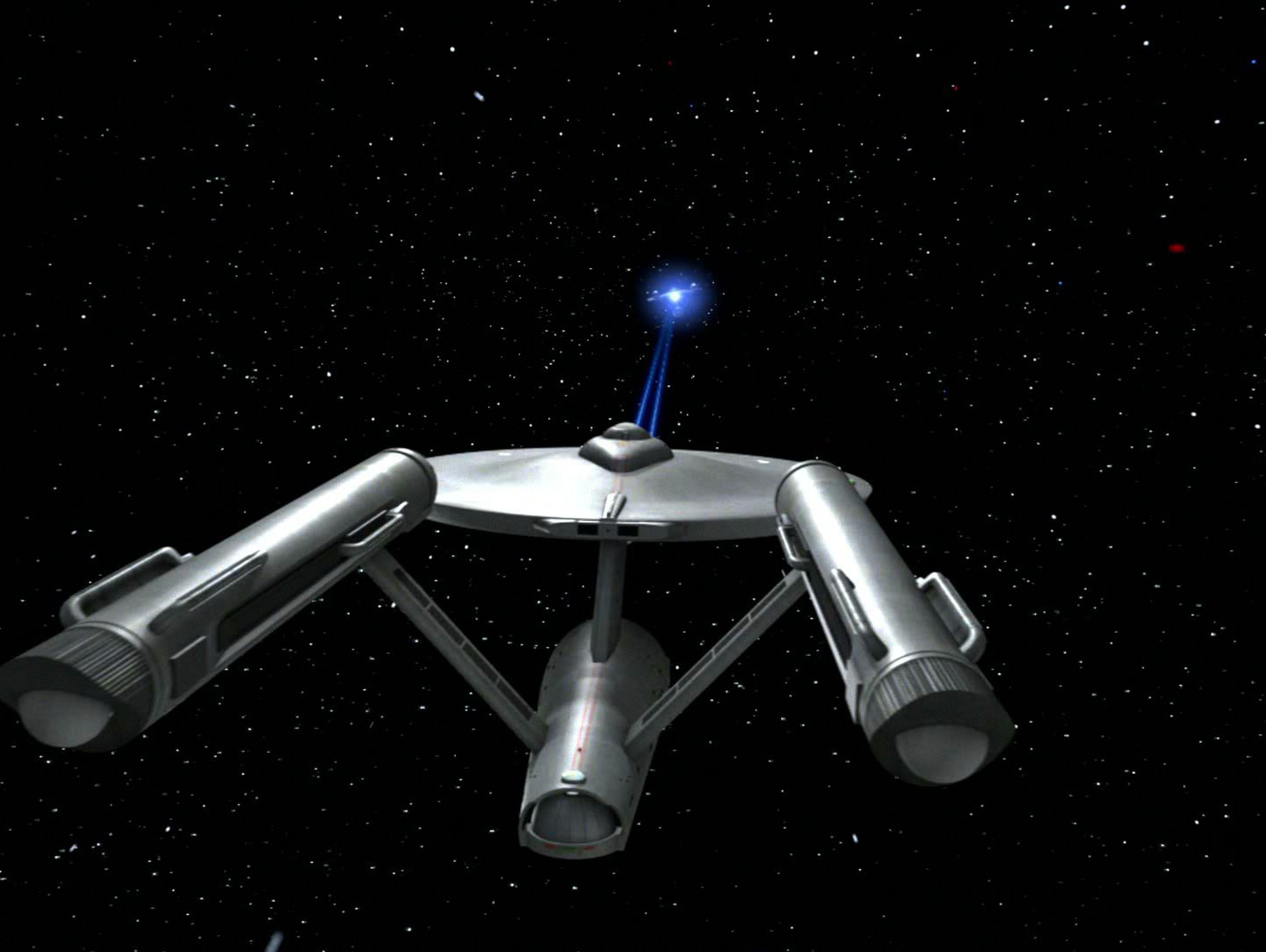
^ A full power phaser impact directly against the armor of a Constitution Class Starship. No disintegration.
Ever since Star Trek's first episode, it has been made clear to the audience - through both dialogue and demonstration - that the Starship Enterprise has powerful enough weapons to destroy a planet's surface outright. The first such statement was Lieutenant Tyler stating that the Enterprise's weapons can "blast half a continent" in it's pre-refit configuration. Even in those dialogues, there is nothing implying that there is anything other than raw firepower at work - no mention of any exotic particle wizardry. Direct statements of firepower and durability in Star Trek are not hyperbolic: the characters involved are usually trained Starfleet personnel who have no reason at all to exaggerate their claims, and their statements tend to be backed by the events as they occur in the series. An example of this (one of many) would be the episode Obsession, in which the Enterprise used a simple antimatter bomb to attack a hostile creature on the surface of Tycho IV. In Star Trek, an antimatter bomb (and other antimatter weapons of any kind, including the supposedly "city level" Photon Torpedoes) generates explosive power by combining matter and antimatter - inside the bomb itself - to release gamma ray photons, not nadions. We actually see the aftermath of the Enterprise's attack on Tycho IV onscreen: the sheer energy release put a clearly visible continent-sized crater into the planet, evaporated all water on the planet's surface, and blasted away the atmosphere.
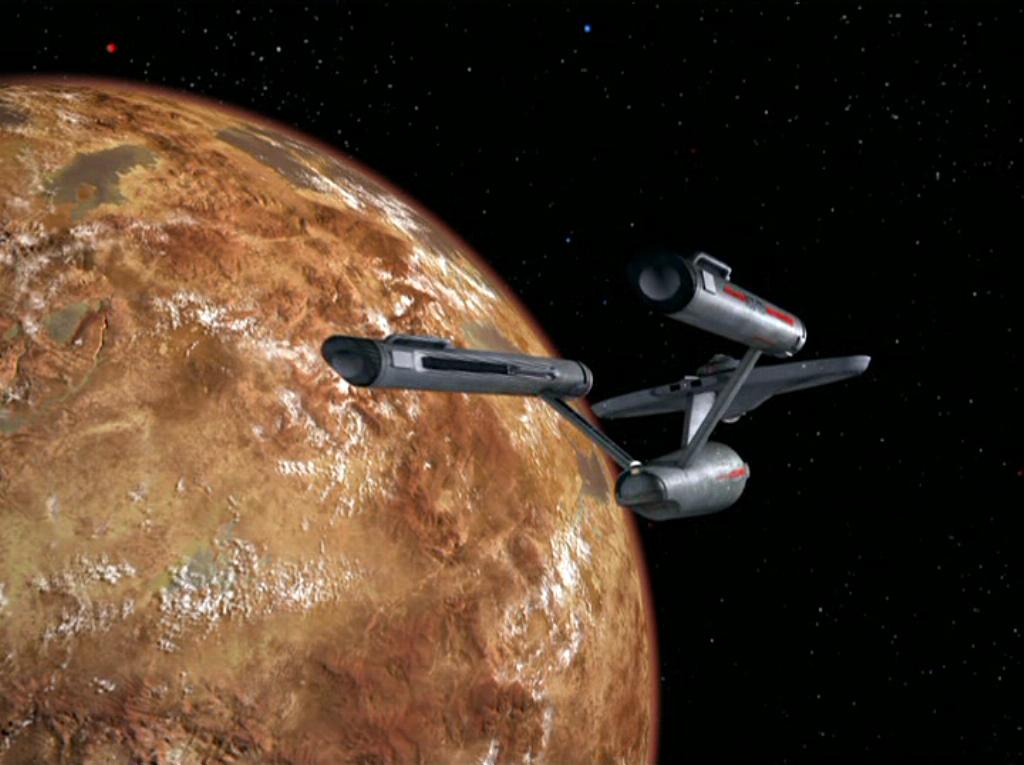
^ Here you can see Tycho IV before the blast. Take note of the clouds and bodies of water.
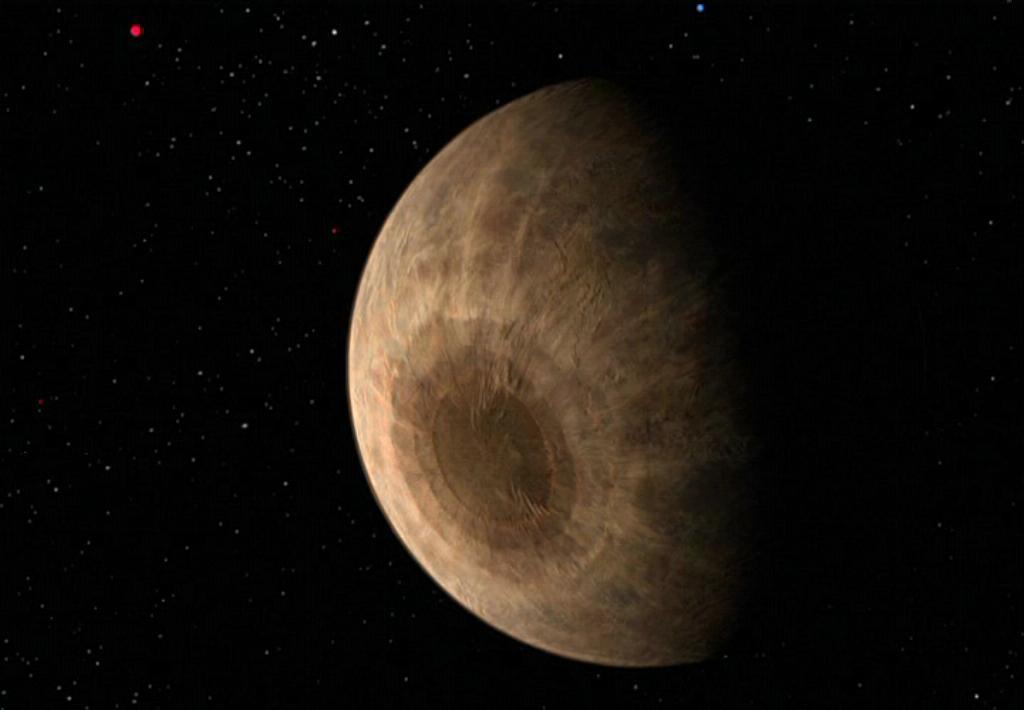
^ This is the aftermath. Take note of the crater, and the complete lack of clouds and bodies of water.
In A Taste of Armageddon, the Enterprise threatens to destroy "the entire inhabited surface" of the planet Eminiar VII in response to continued hostile actions from that world.
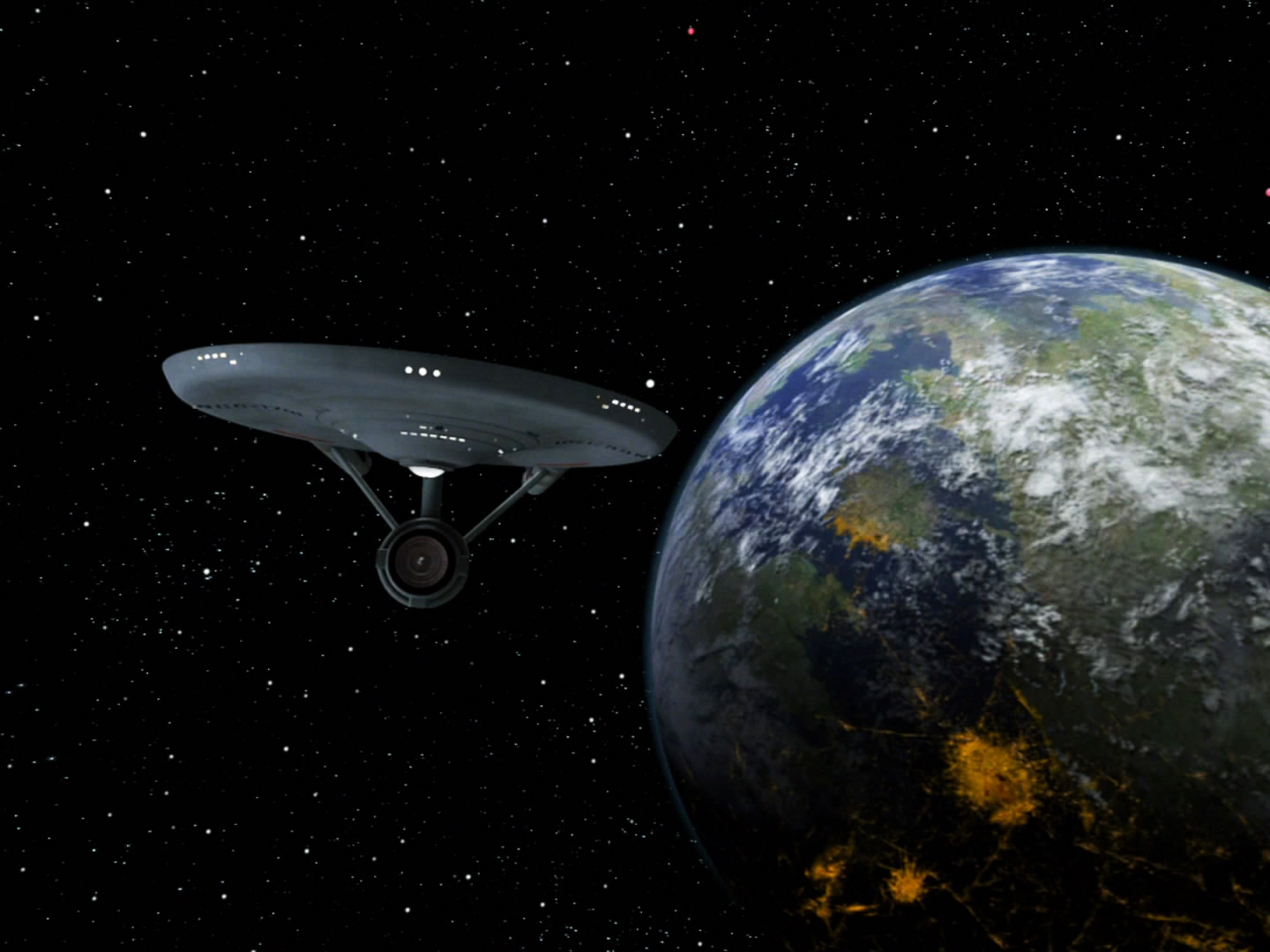
^ Eminiar VII
I've often seen this specific incident used to lowball Star Trek weapons to mere city-level firepower regardless of other demonstrations and statements. However, we know that Star Trek weapons are variable yield: phasers were set to 1/100th power during the war games sequence in The Ultimate Computer, and it was in that very episode that fully powered phasers were also fired.
In light of all that (and so much more information that it would become tedious to list it all), there's no way the original Starship Enterprise can be scaled to less than continent level in either raw firepower or unshielded durability by any logic. That's not even mentioning that the "nadions" spoken of weren't even mentioned until Star Trek's sequel series, and even now are never mentioned in reference to the original ship. I'd suggest restoring the Original Enterprise's phasers and photon torpedoes to around 6-B, as per the statement that the ship can "blast half a continent".
"Continent level+ standard phaser output against solid matter (demonstrates an effect of 4.3 petatons for a phaser burst - see weaponry explanation below for why this only applies to solid matter), City level standard phaser output against deflector shields (scaling from Photon Torpedoes), At least City level with Photon Torpedoes"
"Star Trek phasers work through the generation of a subatomic particle known as nadions, which according to the guidebook and script can cause "liberation of atomic nuclei, disrupting nuclear forces". Basically, it causes a reaction in solid matter that causes a semi-perpetuating subatomic destruction effect, which lasts until the particles are expended. In other words, it is the particle to energy ratio that causes the damage not the actual energy (can be seen in this source: https://www.phasers.net/2360/settings.htm - site used for current accepted hand phaser calc). This reaction is clearly seen with clean "disappearing" of objects hit by phasers, after being hit there is no more matter to react with. Phasers don't do as much damage as photon torpedoes against shields, because they focus less on raw energy output and more on damage caused by the particles which are blocked from reacting by the shields."
I see these statements as highly inaccurate: the site being referenced states that it uses the "Next Generation Technical Manual" - a well recognized recognized non-canon source that directly contradicts the Star Trek TV series in a myriad of ways. To start: in The Doomsday Machine, the Enterprise took a direct hit from the Planet Killer's main weapon with it's shields down (thus, any "exotic particle effect" would have been at play against the bare hull), and it didn't even breach the armor. If the AP were true, the ship should have been instantly atomized. While some might see this as plot armor, the U.S.S. Constellation endured a battle with the Planet Killer in the same episode, and it was in this condition afterwards:

^ The Constellatio after battle with the Planet Killer.
The hull is largely intact and bearing multiple breaches, indicating that multiple shots to the unshielded matter of the ship didn't disintegrate it. The idea that it's specifically phasers that work through "liberation of atomic nuclei" is shown to be false in The Ultimate Computer, where we see fully powered phasers fired against unshielded Federation Starships of the same class as the Enterprise, and they were not immediately destroyed by any such effect. Rather, it took several direct hits to breach the hull, and even the Excalibur - the entire crew of which was killed - was merely wrecked, and not totally destroyed on an atomic level.

^ A full power phaser impact directly against the armor of a Constitution Class Starship. No disintegration.
Ever since Star Trek's first episode, it has been made clear to the audience - through both dialogue and demonstration - that the Starship Enterprise has powerful enough weapons to destroy a planet's surface outright. The first such statement was Lieutenant Tyler stating that the Enterprise's weapons can "blast half a continent" in it's pre-refit configuration. Even in those dialogues, there is nothing implying that there is anything other than raw firepower at work - no mention of any exotic particle wizardry. Direct statements of firepower and durability in Star Trek are not hyperbolic: the characters involved are usually trained Starfleet personnel who have no reason at all to exaggerate their claims, and their statements tend to be backed by the events as they occur in the series. An example of this (one of many) would be the episode Obsession, in which the Enterprise used a simple antimatter bomb to attack a hostile creature on the surface of Tycho IV. In Star Trek, an antimatter bomb (and other antimatter weapons of any kind, including the supposedly "city level" Photon Torpedoes) generates explosive power by combining matter and antimatter - inside the bomb itself - to release gamma ray photons, not nadions. We actually see the aftermath of the Enterprise's attack on Tycho IV onscreen: the sheer energy release put a clearly visible continent-sized crater into the planet, evaporated all water on the planet's surface, and blasted away the atmosphere.

^ Here you can see Tycho IV before the blast. Take note of the clouds and bodies of water.

^ This is the aftermath. Take note of the crater, and the complete lack of clouds and bodies of water.
In A Taste of Armageddon, the Enterprise threatens to destroy "the entire inhabited surface" of the planet Eminiar VII in response to continued hostile actions from that world.

^ Eminiar VII
I've often seen this specific incident used to lowball Star Trek weapons to mere city-level firepower regardless of other demonstrations and statements. However, we know that Star Trek weapons are variable yield: phasers were set to 1/100th power during the war games sequence in The Ultimate Computer, and it was in that very episode that fully powered phasers were also fired.
In light of all that (and so much more information that it would become tedious to list it all), there's no way the original Starship Enterprise can be scaled to less than continent level in either raw firepower or unshielded durability by any logic. That's not even mentioning that the "nadions" spoken of weren't even mentioned until Star Trek's sequel series, and even now are never mentioned in reference to the original ship. I'd suggest restoring the Original Enterprise's phasers and photon torpedoes to around 6-B, as per the statement that the ship can "blast half a continent".
